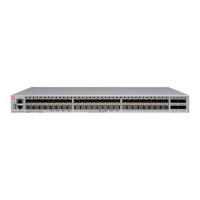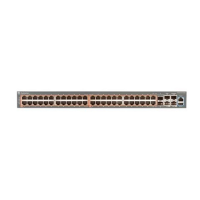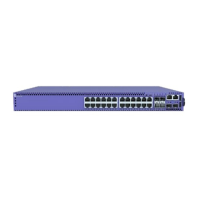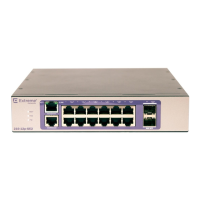Chapter 6: Layer 3 Features
Extreme Networks EAS 100-24t Switch CLI Manual
208
Example usage:
To display the neighbors of the interface System:
show ipv6 neighbor_cache ipif
Purpose Used to display the IPv6 neighbor cache.
Syntax show ipv6 neighbor_cache ipif [<ipif_name 12> | all] [ipv6address
<ipv6addr> | static | dynamic | all]
Description This command is used to display the neighbor cache entry for the specified
interface. Display a specific entry, all entries, and all static entries.
Parameters <ipif_name 12> - The interface’s name.
<ipv6addr> - The address of the entry.
static - The static neighbor cache entry.
dynamic - The dynamic entries.
Restrictions None.
#show ipv6 neighbor_cache ipif System all
Command: show ipv6 neighbor_cache ipif System all
Neighbor Link Layer Address Interface State
-------------------------------------- ------------------ ------------ -----
FE80::240:66FF:FE00:3 00-11-22-33-44-55 System T
Total Entries: 1
State:
(I) means Incomplete state. (R) means Reachable state.
(S) means Stale state. (D) means Delay state.
(P) means Probe state. (T) means Static state.
#
create ipv6route
Purpose Used to create an IPv6 static route.
Syntax create ipv6route [default] [<ipif_name 12> <ipv6addr> | <ipv6addr>]
{<metric 1-65535>}
Description This command is used to an IPv6 static route. If the next hop is a global
address, it is not needed to indicate the interface name. If the next hop is a
link local address, then the interface name must be specified.
Parameters default – Specifies the default route.
<ipif_name 12> – Specifies the interface for the route.
<ipv6addr> - Specifies the next hop address for this route.
<metric 1-65535> - Allows the entry of a routing protocol metric entry
representing the number of routers between the switch and the IP address
above. The default setting is 1.
Restrictions Only Administrator-level users can issue this command.
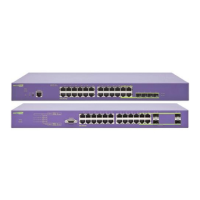
